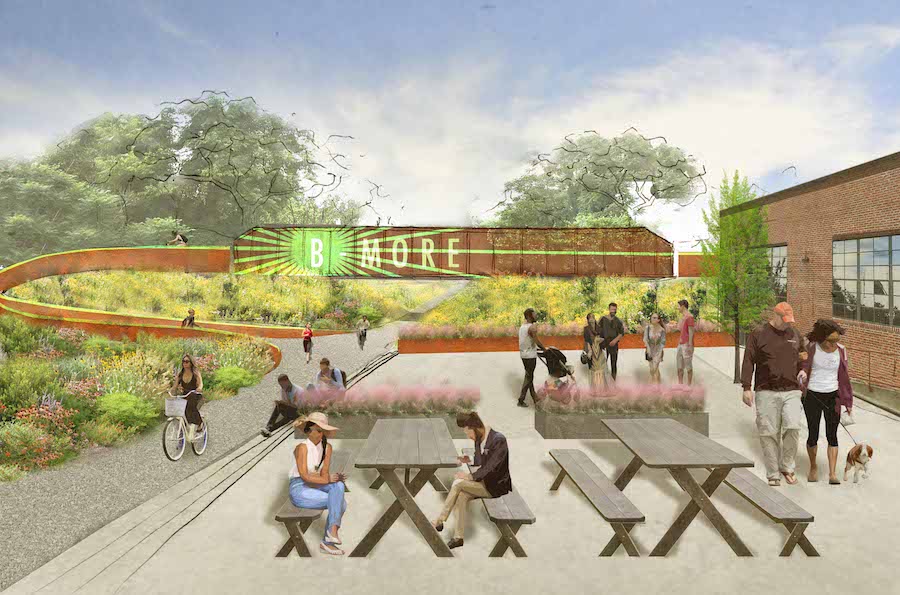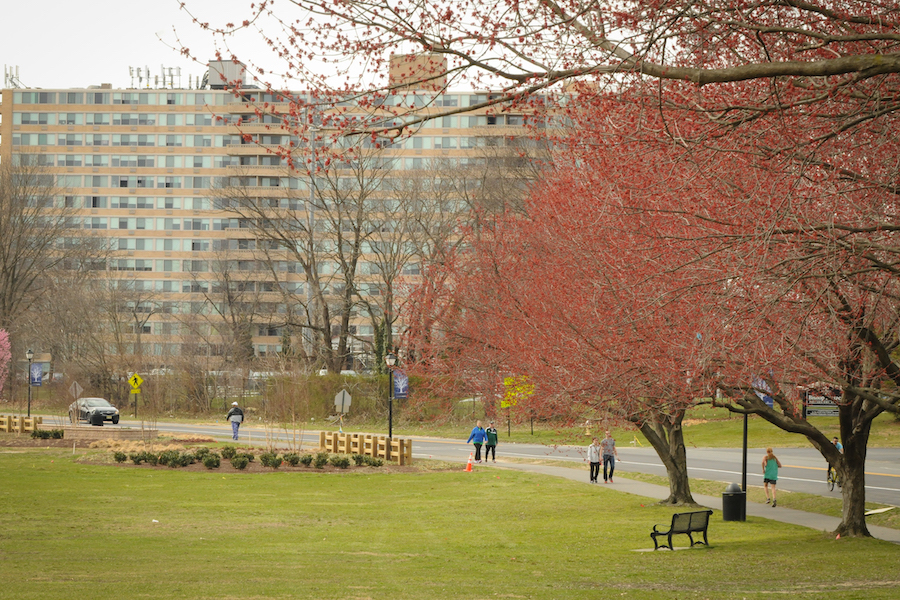Eight Critical Wins for TrailNation in 2018

At Rails-to-Trails Conservancy (RTC), we believe that connected trail systems can be game-changers for communities—generating positive impact that improves our mobility, our health and the environment, while spurring economic development and creating more equitable and balanced transportation systems. Through our TrailNation™ portfolio, we’re putting this theory to work in eight diverse places across the country—investing in projects and partnerships that show what’s possible when trail networks are central to our lives.
This past year, we worked with hundreds of partners across TrailNation to secure funding, provide advocacy and technical planning expertise, and generate public support for trail networks that are proving vital to the people and places they serve.
Here is a spotlight on some of the critical project advances we made in 2018—and how they are bringing to life our vision of trails at the heart of healthy, thriving communities.
$250,000 Grant Secured to Improve Connectivity in South Baltimore

In South Baltimore, many neighborhoods currently don’t have access to safe places to walk and bike. RTC is leading the development of the Baltimore Greenway Trails Network—a 35-mile network of urban trails in Baltimore City—to provide safe walking and biking connections within and between the city’s diverse communities, cultural amenities and outdoor resources.
Key to the network vision is closing a gap between the Gwynns Falls Trail and the Inner Harbor. RTC led efforts to secure a $250,000 federal grant, announced in September, for the Baltimore Department of Transportation to move forward with the design phase of a 0.8-mile trail extension along the Middle Branch of the Patapsco River, highlighting Solo Gibbs Park in the city’s historic Sharp-Leadenhall community—a critical next step in building out this infrastructure.
Currently a disjointed collection of sidewalks and on-road bike facilities, the new trail connection is representative of the equitable investments the trail network can deliver in the city, creating a seamless off-road route linking the neighborhoods of south Baltimore and new access to the waterfront that is right at the community’s doorstep.
$180 Million Secured to Complete California’s Trail Networks

For years, RTC has been advocating for innovative funding programs in California, where we’re focusing on the creation of a massive 2,700-mile regional trail network in the San Francisco Bay Area as part of the Bay Area Trails Collaborative. When complete, the trail network will provide safe walking and biking routes for millions of people across nine counties.
In 2017, the state voted to increase its contribution to its Active Transportation Program—a first-of-its-kind state-level funding program for trails and walking and biking projects—by $100 million per year. Then in the summer of 2018, voters in the state approved Proposition 68, which allocates $30 million for trails as well as additional eligibilities for trail networks. At the same time, voters in the San Francisco Bay Area signed off $150 million worth of bridge tolls to go toward the San Francisco Bay Trail and the Safe Routes to Transit program!
Combined—RTC’s advocacy yielded hundreds of millions for trails in the state, which will have a huge impact on the completion of the trail network and help California reach its ambitious transportation, health and greenhouse gas reduction goals.
Creating Safe Walking and Biking Connections in the D.C.-Metro Region

Through our shared leadership of the Capital Trails Coalition—an equitably distributed 800-miles-plus trail network of new and existing trails in the D.C. metro region—RTC and the Washington Area Bicyclist Association (WABA) have spearheaded efforts to complete the analysis of hundreds of miles of trails to finalize the Capital Trails Network map of existing and project trails. Through the process, the coalition identified 40 priority projects that will catalyze trail network development.
One of these initiatives—the Long Bridge Project—is a once-in-a-lifetime opportunity to create a much-needed safe pedestrian and bicycling crossing on the two-track railway bridge over the Potomac River linking Crystal City, Virginia, to the Southwest waterfront in Washington, D.C. We’ve turned out dozens of community supporter and generated exposure for the benefits this project would deliver in the region, especially as news that Amazon will locate its new HQ2 in Crystal City. As of November, the preferred plans presented by D.C. and the Federal Rail Administration include a trail bridge and we’ll be working hard to make sure it gets funded and built.
Creating Vital Community Connections in Camden County, New Jersey

RTC is collaborating with partners in Camden County, New Jersey, to create the Atlantic Avenue Trail, a 12-mile developing project that would link dozens of neighborhoods between Oaklyn and Winslow. Part of a larger effort by the Circuit Trails Coalition to create an 800-mile trail network in the Philadelphia-Camden region—the trail also makes up a significant stretch of the developing 32-mile Cross Camden County Trail.
The project’s first phase focuses on a 1-mile rail-with-trail segment between Audubon and Haddon Heights, New Jersey, that will improve safety for pedestrians and bicyclists by removing street crossings and installing new directional and stop signage for motorists. When complete, the project will create new community cohesion, linking public transportation, businesses, schools, parks and other community facilities.
Completing an Epic Trail Corridor in West Virginia and Pennsylvania

Through the Industrial Heartland Trails Coalition—RTC is working with the Pennsylvania Environmental Council, the National Park Service and dozens of other partners to create an ambitious 1,500-mile trail network across 48 counties in Pennsylvania, West Virginia, Ohio and New York. A key project of the IHTC is the Parkersburg to Pittsburgh Corridor (P2P), a 150-mile route that—when complete—could result in one of the longest continuous rail-trails in the United States, stretching from Parkersburg, West Virginia, to the Pennsylvania state border.
In 2018, RTC wrapped up a feasibility study of the corridor that found the remaining gaps (comprising about 20 percent of the route) could be closed—and the potential of the full corridor realized—within the next decade!
A key finding of the study: Completing short gaps in Wood, Harrison and Marion counties, and connecting existing rail-trails in West Virginia with the world-renowned Great Allegheny Passage, would open the door to a recreation and tourism economy worth tens of millions of dollars per year.
Sparking a Culture of Healthy Living in Cameron County, Texas

Last year, RTC formally joined efforts with The Valley Baptist Legacy Foundation and 10 municipalities in Cameron County, Texas, to begin implementing the Lower Rio Grande Valley Active Plan—a 428-mile trail network designed to promote healthy living within the community, while generating new opportunities for active tourism and economic development for the region, which faces staggering rates of poverty, obesity and diabetes.
In April 2018, RTC brought in a $2 million grant from The Valley Baptist Legacy Foundation to help complete the first portion of one of the Active Plan catalyst projects—a 1.8-mile extension of the City of Brownsville’s Historic Battlefield Trail. The project, which is the first phase in a plan to connect Brownsville and Los Fresnos by trail, will help infuse money into the local economy, both during its initial construction phase and in the long term. It is estimated that in the first 10 years of completion, out-of-town visitors to the catalyst projects alone will spend nearly $367 million in Cameron County.
Creating New Avenues for Active Transportation in Miami and Beyond

The Miami-Dade region is one of the most auto-dependent in the country—and one of the nation’s least safe for bikers and pedestrians. The Miami LOOP is a 225-mile trial vision by RTC and the Miami-Dade Trail Alliance to generate new greenspace, trail-transit, cultural and health connections that will address these issues and spark a new era of regional competitiveness.
In September 2018, the county voted to purchase a 5-mile portion of disused railroad corridor to help complete the Ludlam Trail—a 6.2-mile developing pathway that will help preserve a tranquil but significant 75-acre area through the project footprint. This pending acquisition is the product of years of advocacy by RTC and local partners, ultimately making it possible to complete the trail, which is slated to connect more than 34,000 people within a half-mile walkable service area and generate up to $1.8 billion in estimated user spending annually when complete.
Along with The Underline, another project within the LOOP footprint, it’s estimated that trail use inspired by these two trail connections over 15 years could result in nearly 119 million vehicle miles avoided—nearly the average distance from Earth to Mars!
Legislative Caucus Kicks Off to Ramp Up Support for Trails in the Badger State

In seven counties across southeastern Wisconsin, RTC is leading a dogged coalition of diverse partners to deliver transformative benefits to the region’s rural, suburban and urban areas through the Route of the Badger— a vision to connect 500-miles of trails in ways that are inclusive, strengthening regional tourism and promoting healthy lifestyles and outdoor recreation.
In Fall 2018, RTC and Route of the Badger supporters celebrated a major victory when the Wisconsin Legislative Trails Caucus formed. The caucus—a unique bipartisan group of lawmakers (modeled after RTC’s work to establish the Ohio Legislative Trails Caucus) is designed to generate support for trails within the Wisconsin Legislature. Championed by Rep. Evan Goyke of the 18th District, RTC and the Wisconsin Bike Fed, the caucus ensures trails will be part of the conversation at biennial state budget discussions and legislative sessions, with a focus on generating the funding, momentum and legislative support to complete the 160 miles of trails needed to make the trail network whole.

Donate
Everyone deserves access to safe ways to walk, bike, and be active outdoors.